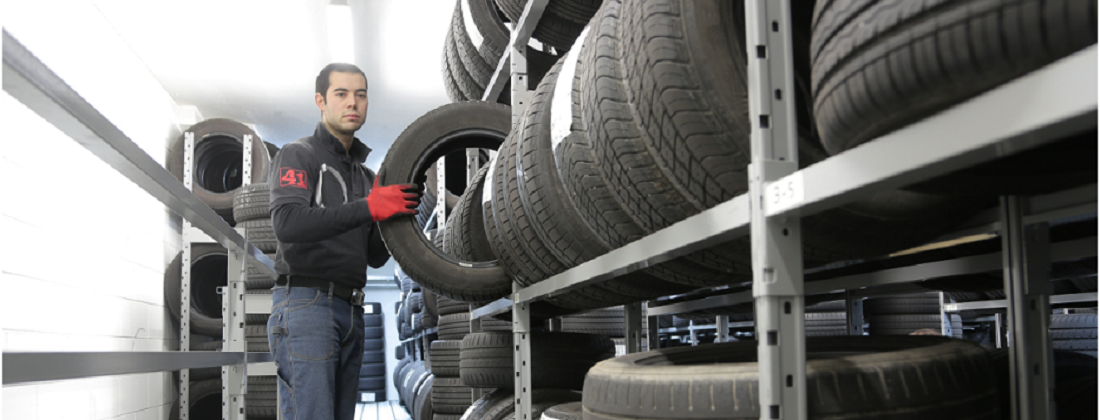How to Store Your Tires
October 26, 2022

You may want to make a habit of replacing your seasonal tires as the season changes. Whether you’re doing it seasonally or you’re switching over between summer and winter tires, you need to consider how you’ll keep your off-season set. You can either hire a professional or do it yourself in your garage. But what happens after they have been removed?
It is crucial to understand how to deal with used tires once they’ve left your car. The properties of your tires may change if they are not taken care of and preserved safely. This could have an effect on your tire’s longevity. They may end up being replaced if they deteriorate excessively when kept.
However, if you maintain them properly, they’ll last for years while saving you money. When it’s time to mount your tires onto your vehicle, there are a few things to do.
All those items in which they are housed, how they are dressed, and where they are stored are contemplated. Read this article in its entirety to find out how you can get most of your saved tires.
Clean your tires before storing them
Like any other component of the car, tires may accumulate dirt over time. Any tire dressing that has been applied, dirt and brake dust, should be removed before storing your tires. For this step, set up a warm bath with bubbles to wash tires with, and afterward, clean them with water. When you store your tires on the wheel, make sure you’re also cleaning them too, and that your tires are completely dry after washing them before you move on to the next step.
No dressing needed
This step necessitates inaction instead of action. You don’t need any preparation whatsoever before storing your motorcycle tires. The materials in your tires are designed to withstand ozone cracking or other kinds of environmental stress. Dressing your tires can shorten their life, as opposed to extending it.
Put them in a bag
Each tire ought to be kept in a huge, airtight plastic bag. Yard bags or leaf bags are a good choice. First, ensure that the rubber and bags are dry, then remove all air possible and tape the bag shut. Oil disappearing from rubber compounds can be limited by an airtight atmosphere.
There are also tire carriers or storage caddies. They make it simpler to store and transport tires and keep them clean and dust-free. They are not airtight, though. If you want to apply them, bag your tires as described above, and put them in your tire cart.
The sun should be avoided
Rubber is susceptible to ultraviolet radiation and the sun’s heat. It is best to keep your tires out of direct sunlight when storing them.
Select a location
Tires should never be left out in the open unnecessarily, even if they are covered outside. In hot and windy conditions, it is best to ensure that they are covered. You should keep them in a cold and well-ventilated area, such as a basement.
Tires are also insulated from heat sources in secluded areas. Humidity, temperature, and precipitation vary widely in most garages, attics, and sheds. You should try to stay away from these swings.
Avoid exposing your tires to chemicals
The greatest chemical to avoid is ozone. It is very harmful to tires. Electric motors with contact brushes produce ozone.
They include: compressors, central vacuum cleaners, switches, generators, furnaces, and sump pumps. Ensure that your storage unit does not possess these items. Moreover, keep away solvents, lubricants, and fuels.
Shelter white rubber
Do your tires have whitewalls or other white elements such as lettering? If you don’t want to bag your tires, you may opt to store them with the white parts touching each other and the black parts touching each other.
Here is the reason. The white side’s dark rubber has a different composition than the black side’s dark rubber. On the white side of the tire, a non-staining black layer of the rubber is employed to stop oils from moving from dark to white sections and producing discoloration.
Black sidewalls have a standard rubber. To keep white rubber bright, maintain a white rubber to white rubber and black to black ratio.
Is it better to stand, stack, or hang?
You can store your tires in one of three ways: standing upright, stacking them on their side, or hanging them on racks or hooks. Allowing the tires to last longer is the best alternative because this reduces stress on them.
If you have to stack, don’t stack too high. You do not wish to topple over the tires and damage them. Rims with tires on them? In that situation, stacking is a smart option.
Mounting tires on rims can also be achieved by hanging them from tire hooks or racks, which is among the most optimal choices. Unmounted tires should not be hung since this could cause them to alter and break.
Final Remarks
Tires have a natural lifespan. If you follow these suggestions, you can increase the amount of time between tire rotations. Storing your tires at the tire service ensures that they are cared for by professionals. Additionally, before you put your tires back in your vehicle for another good reason to drive, have them checked by a technician.
Back


